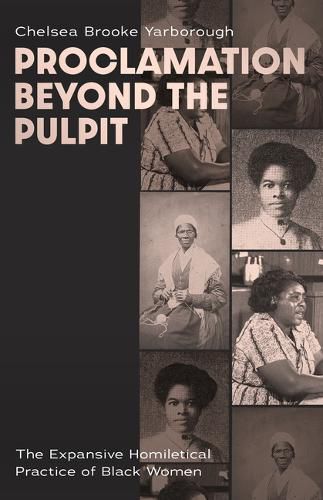Readings Newsletter
Become a Readings Member to make your shopping experience even easier.
Sign in or sign up for free!
You’re not far away from qualifying for FREE standard shipping within Australia
You’ve qualified for FREE standard shipping within Australia
The cart is loading…






Preaching is typically considered to be a practice confined to ministry within the institutional church. Studies of preaching are often filtered through the lens of the pulpit, with Black women rarely positioned as central figures in this discourse. Proclamation Beyond the Pulpit lifts up Sojourner Truth, Nannie Helen Burroughs, and Fannie Lou Hamer as crucial sources for homiletic theory. Chelsea Yarborough introduces a methodology for preaching arising from the witness and practices of these three Black women non-pulpit preachers, expanding our understanding of proclamation beyond traditional notions of its nature and purpose.
This shift away from the limitations of the pulpit into the public sphere and beyond has deep roots in the preaching legacy of Black women. Often denied places of authority in the church, Black women have carved out spheres for their proclamation, teaching us that the essence and purpose of preaching is less about place and more about impact and practice. By centering the lives and ministries of three historical Black women preachers who preached beyond the pulpit, Yarborough highlights a lineage of expansive homiletical possibilities and offers valuable insights for preachers across diverse platforms.
$9.00 standard shipping within Australia
FREE standard shipping within Australia for orders over $100.00
Express & International shipping calculated at checkout
Preaching is typically considered to be a practice confined to ministry within the institutional church. Studies of preaching are often filtered through the lens of the pulpit, with Black women rarely positioned as central figures in this discourse. Proclamation Beyond the Pulpit lifts up Sojourner Truth, Nannie Helen Burroughs, and Fannie Lou Hamer as crucial sources for homiletic theory. Chelsea Yarborough introduces a methodology for preaching arising from the witness and practices of these three Black women non-pulpit preachers, expanding our understanding of proclamation beyond traditional notions of its nature and purpose.
This shift away from the limitations of the pulpit into the public sphere and beyond has deep roots in the preaching legacy of Black women. Often denied places of authority in the church, Black women have carved out spheres for their proclamation, teaching us that the essence and purpose of preaching is less about place and more about impact and practice. By centering the lives and ministries of three historical Black women preachers who preached beyond the pulpit, Yarborough highlights a lineage of expansive homiletical possibilities and offers valuable insights for preachers across diverse platforms.